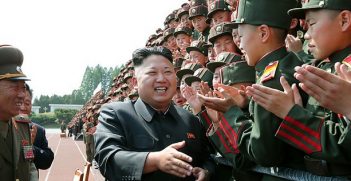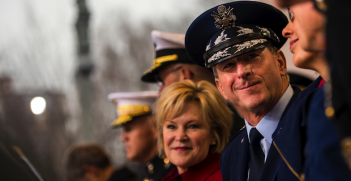Welcome to Australia? The Fraser Government’s Approach to Refugees
When South Australia’s new governor, Hieu Van Le, first arrived in Australia aboard a small fishing boat in 1977, he and his fellow passengers were apprehensive about the reception they would receive. Having fled Vietnam after the communist victory, they had been pushed back out to sea by the coastguards of Singapore and Malaysia. But in Darwin harbour, they were greeted by two blokes in a tinnie, one of whom who raised his stubby and shouted, “G’day, mate. Welcome to Australia!” Le regards himself as “an embodiment of the immigrant experience” but, in fact, his immigrant experience was not typical of the Indochinese who came to Australia. Less than 2,500 of the 70,000 Indochinese refugees who came to Australia during the Fraser era arrived by boat. However, Le’s personal story embodies the way in which Australia’s response to the Indochinese refugee crisis is remembered as generous and welcoming.
Prime Minister Malcolm Fraser is remembered for choosing an approach that is almost universally acclaimed as having been proactive, generous, effective, and humanitarian in spirit. Historian Don McMaster, for example, suggests that the Fraser Government “responded speedily and efficiently to the refugee situation”. Lamenting the politics of fear to which he alleges Fraser’s conservative Prime Ministerial successor, John Howard, succumbed and perpetuated for his advantage, former Immigration Department Secretary, John Menadue, claims that Fraser “showed leadership in ‘encouraging the better angels of our nature’.” Even Fraser himself, now a passionate and vociferous advocate for asylum seekers and refugees, uses the popular memory of his legacy in order to distance his approach from that of his Coalition successors.
While assertions regarding the outcomes of Fraser’s approach are valid – between 1976 and 1982 nearly 70,000 Indochinese were resettled in Australia and approximately 80,000 came afterwards via the orderly departure scheme and immigration channels established by the Fraser Government – I argue that this was not the brave and principled course of action for which Fraser and his Immigration Ministers are regularly feted. Under Fraser, boat arrivals like Hieu Van Le were not welcomed with open arms and in generous numbers as is sometimes suggested. The Government’s top priority during Fraser’s Prime Ministership was, as it is now, to stop the boats. Nor did the Fraser Government rush to alleviate the refugee burden being shouldered by the countries of first asylum in South East Asia. Its initial response was cautious and limited. The Government only accepted significant numbers of refugees for resettlement after the arrival of boats on Australia’s own shores unsettled the public and threatened its chances of re-election. Like previous Australian Governments, the Fraser Government was motivated by its international reputation and the desire to maintain control, or the perception of it, over who could come to Australia and how they came. The careful selection of refugees from the camps in South East Asia meant that, though the numbers were large, the Government could appear to be exercising control both over the flow and the quality of migrants, who were selected according to their ability to contribute to, and integrate with, the nation, rather than simply their need for refuge and security.
The purpose of my reassessment of the Fraser Government’s response to the Indochinese refugees is neither to denigrate the outcomes of its policies nor to undermine the importance of Malcolm Fraser’s current refugee advocacy. Rather, it is to remind those who regard the Fraser era as an exception to Australia’s otherwise poor refugee record or, alternatively, as the pinnacle of Australia’s humanitarianism, that Fraser and his Ministers were acting under a similar set of constraints, with similar motivations to government’s past and present. Idealising the past makes it difficult to compare it to the current situation and draw lessons from it. To suggest that Fraser’s success in dealing with Australia’s first boat ‘crisis’ was merely a case of brave leadership and principled action, for example, makes it hard to imagine how any of today’s poll-driven and poll-dependent leaders could choose a similar course. It is more important to understand how, with similar objectives, motivations, pressures and constraints, the Fraser Government nevertheless eventually produced a ‘solution’ that ultimately served both humanitarian and national interests.
Re-examining the Fraser Government’s handling of the Indochinese refugee crisis should be part of a broader critical analysis of Australia’s responses to asylum seekers and refugees stretching from federation until the present day.
Katrina Stats is a PhD Candidate in the Department of Politics & International Studies, School of History and Politics, at The University of Adelaide. This piece is a shortened form of her article in the Australian Journal of International Affairs.





